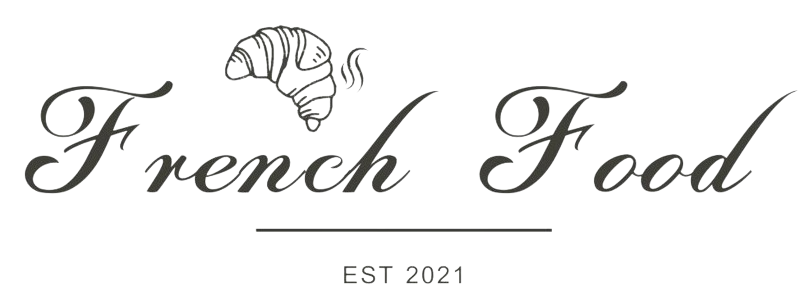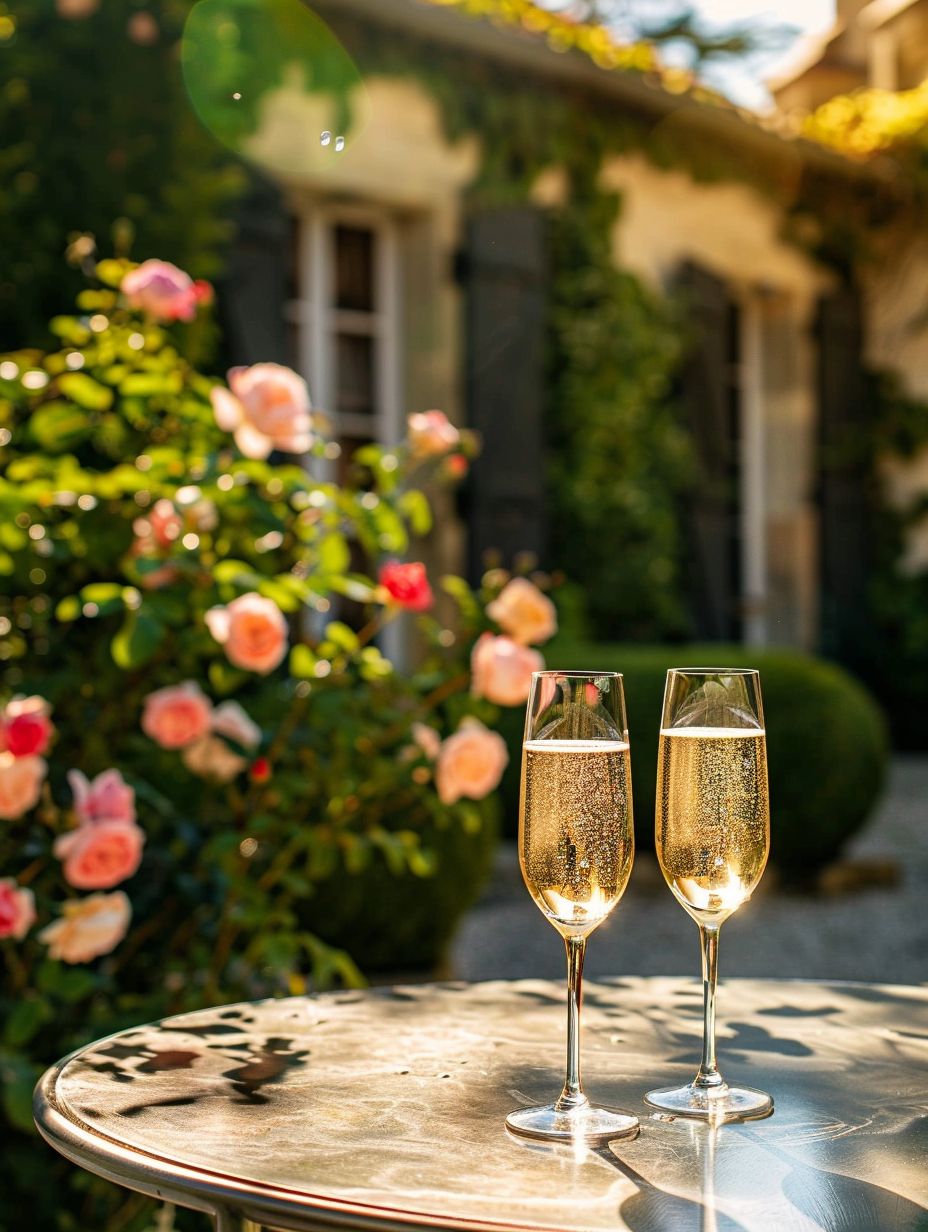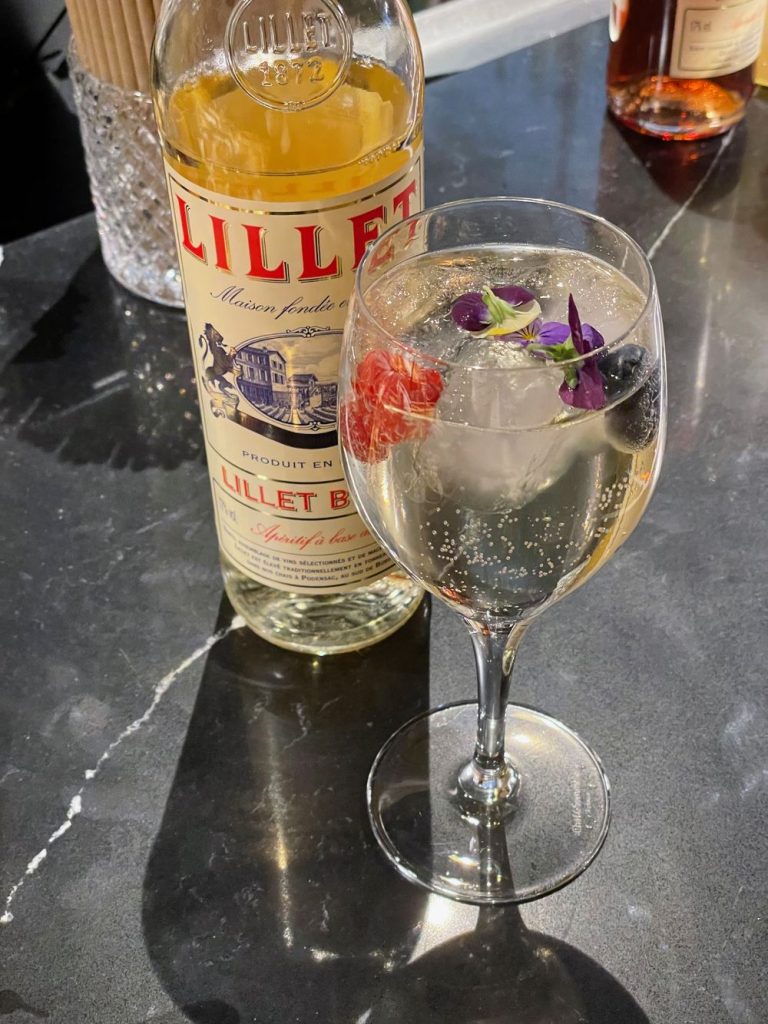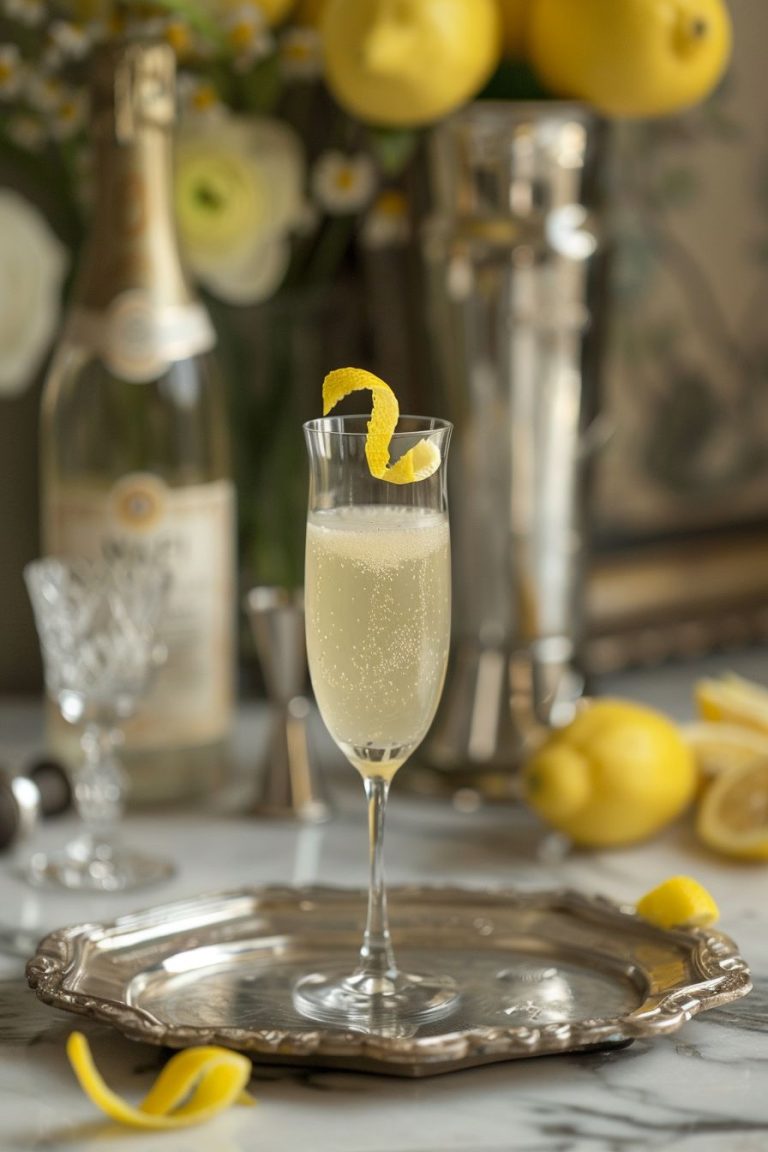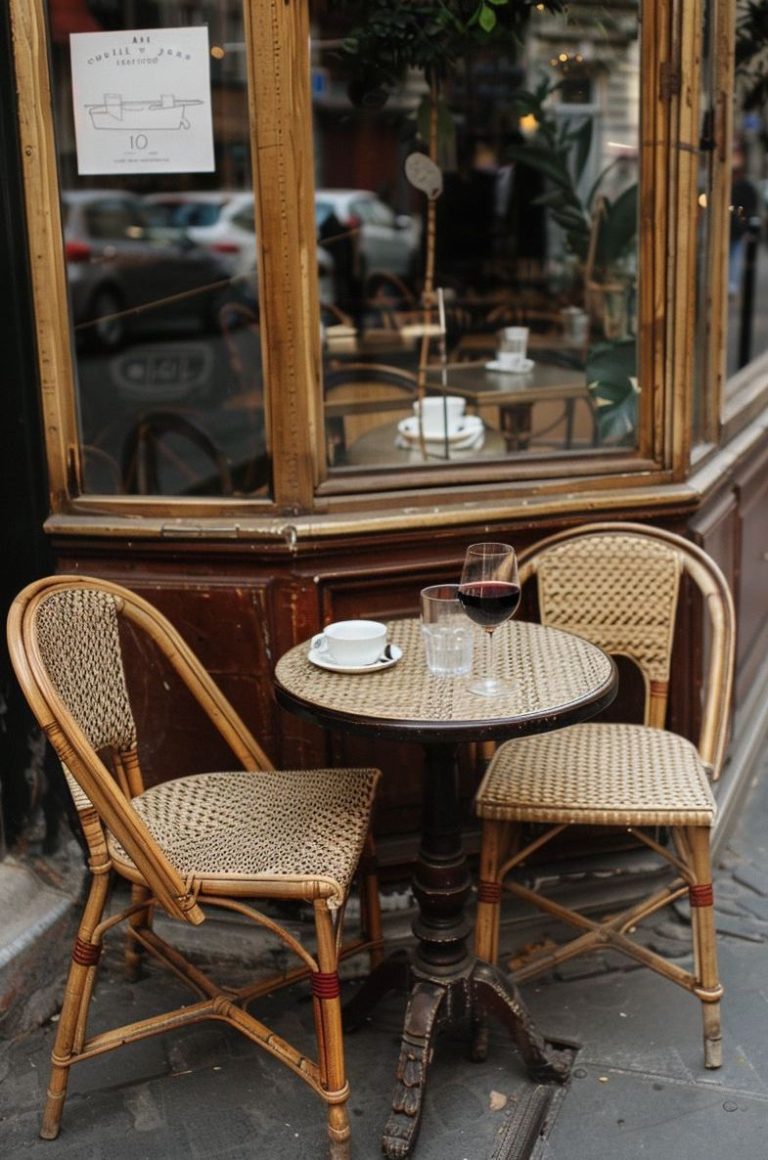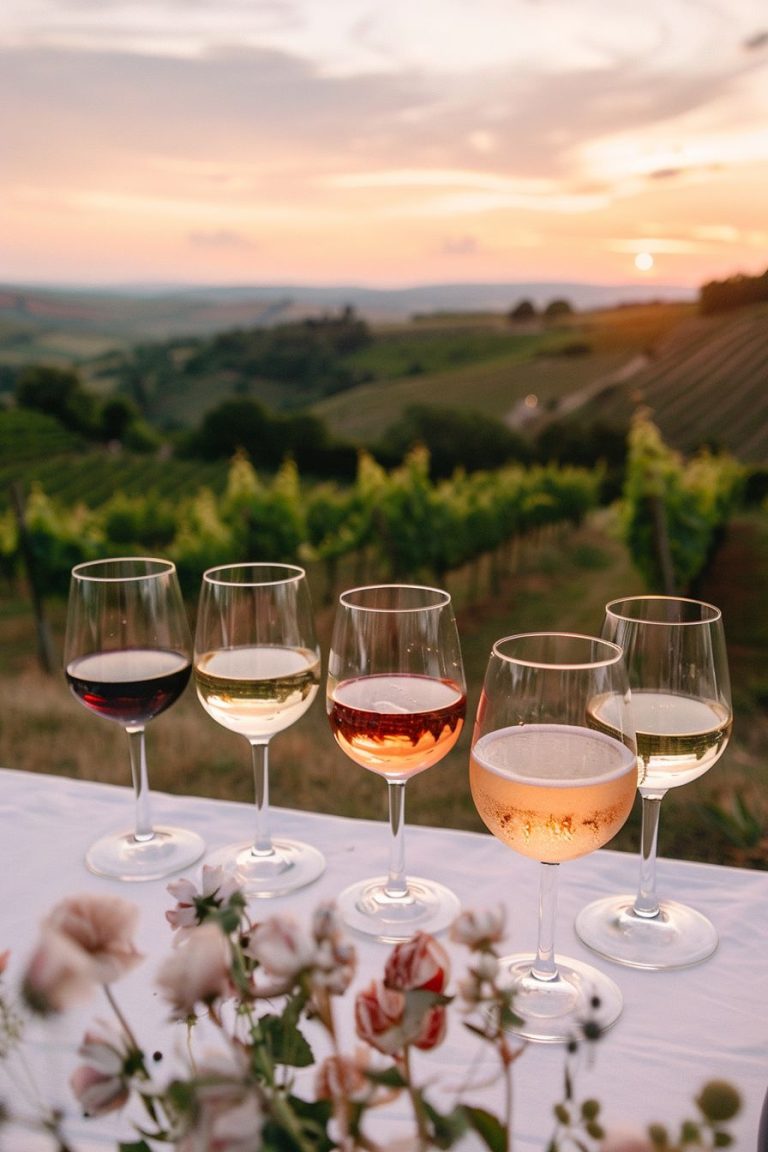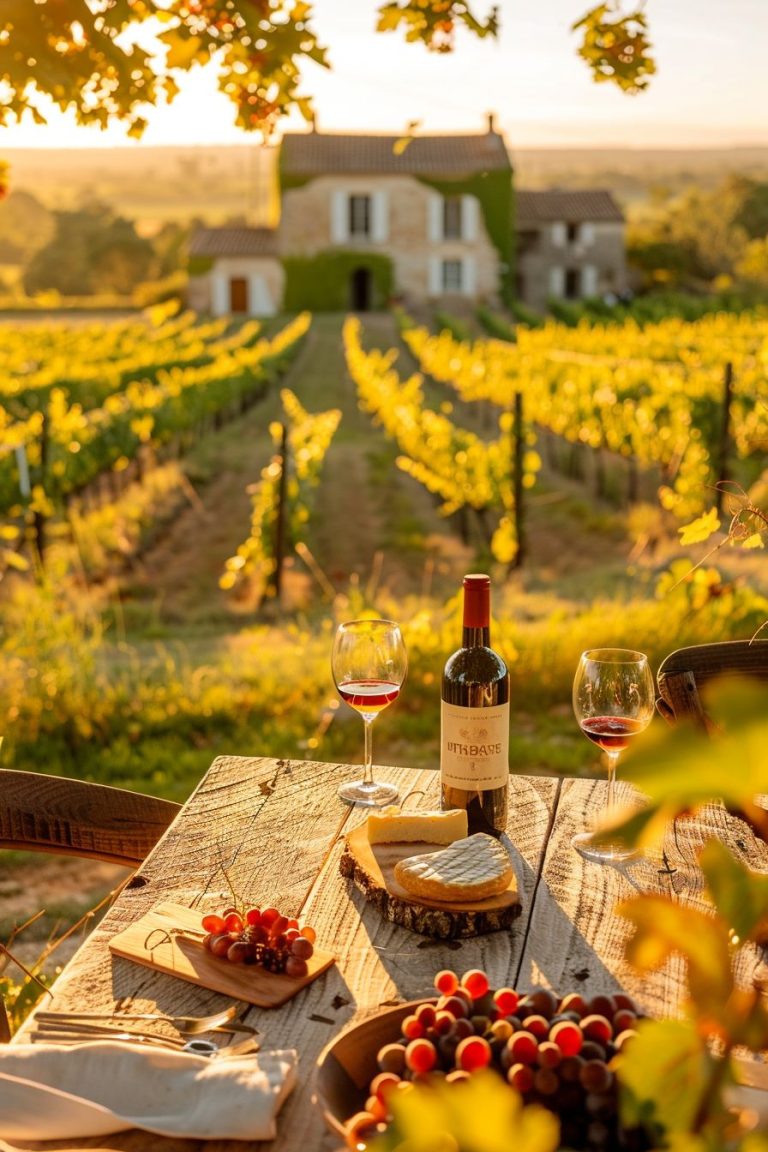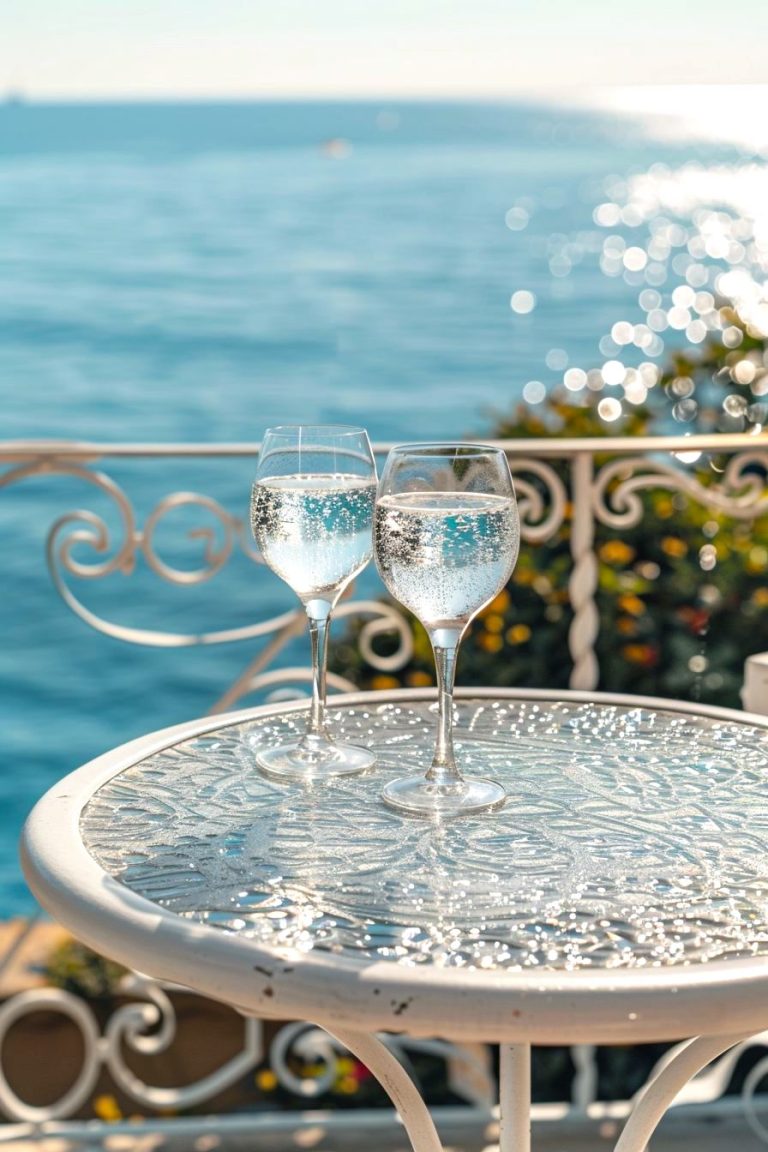15 Popular French Beverages Consumed in France
We may earn a commission through all links on this website. As an Amazon Associate, we earn from qualifying purchases.France is renowned for its delicious cuisine and culture, but it is also home to some of the most popular beverages in the world. From refreshing fruit beverages to classic French wines, the nation offers a wide range of drinks to satisfy all tastes. If you’re thirsty, here are some of the most beloved French beverages consumed in France and their unique flavor profiles.
Everyday French Drinks
Many French people enjoy drinking non-alcoholic drinks throughout the day, such as hot and cold coffees, teas, juices, and sodas. As such, non-alcoholic drinks are an important part of the French lifestyle, and many French people drink them daily. There are some drinks that are considered staples in almost every French household kitchen.
Bottled Still Water
Bottled still water is a common drink among the French population. It is often preferred over tap water, which can contain tiny remnants of waste or chemicals. Bottled still water is widely available in France, both in restaurants and shops, and is often consumed with meals. Many French people view drinking bottled still water as a healthier alternative to other sugary beverages.
There are many different regional brands of bottled water in France, each with its own unique taste and origin, and some regions have their own local favorites. The most popular type of bottled still water consumed in France is Evian, a mineral water sourced from the Alps and bottled in the Haute-Savoie region. Evian is known for its unique taste and its naturally occurring minerals, including calcium, magnesium, and potassium. Other popular brands of bottled still water consumed in France include Volvic and Badoit.
Sparkling Water
Sparkling water is a popular drink among the French, and it is no surprise why! Sparkling water is a refreshing and delicious beverage that has become increasingly popular in recent years. It is made by adding carbon dioxide gas to plain water, resulting in a bubbly drink that is both thirst-quenching, mineral-rich, and enjoyable. It is also slightly acidic, which helps to refresh the palate and make it the perfect accompaniment to food. The French love the taste of sparkling water, and it is a common choice at social events and dinner parties.
Perrier Carbonated Mineral Water
$36.00 ($0.09 / fluid ounce) (as of December 7, 2025 16:28 GMT -05:00 - More infoProduct prices and availability are accurate as of the date/time indicated and are subject to change. Any price and availability information displayed on Amazon at the time of purchase will apply to the purchase of this product.)Perrier is the most popular French sparkling water brand, followed closely by Badoit. Evian sources its own bottled sparkling water from a spring in the French Alps. Vittel comes from a spring in the Vosges Mountains and is known for its crisp taste.
Coffee
Coffee consumption in France is quite high, with the average French person drinking an estimated 2-3 cups of coffee per day. French people typically consume coffee in small cups, rather than large mugs, and they tend to savor their coffee slowly over conversations with friends or colleagues. On Sundays, many French households will enjoy a leisurely cup of coffee with their breakfast.
French coffee culture is deeply ingrained in the culture, and it is a common way for people to socialize, relax, and enjoy life ever since the first Parisian cafés opened their doors in the 1600s.
French people often prepare their coffee at home with a traditional French press, and they like to add a bit of sugar or cream to their coffee for a sweeter flavor. The classic café au lait is a French coffee standard made with equal parts coffee and heated milk, typically served in a large bowl.
Rouge Richard Whole Bean Coffee
$42.00 (as of December 7, 2025 16:28 GMT -05:00 - More infoProduct prices and availability are accurate as of the date/time indicated and are subject to change. Any price and availability information displayed on Amazon at the time of purchase will apply to the purchase of this product.)At a restaurant, French people will often simply order un café, which isn’t a black coffee but rather a small, concentrated shot of espresso. Another traditional French coffee is called a café crème, which is a shot of espresso topped with steamed milk. The café americano, coffee made with espresso and hot water, resulting in a milder flavor than traditional espresso, is another popular choice. Café noisette is a French favorite shot of espresso with a small amount of steamed milk, similar to a macchiato.
French coffee culture is characterized by its appreciation for quality, with a strong emphasis on the origin of the beans, the roasting process, and the brewing method.
While not as popular as coffee, tea is also widely consumed in France, especially in the form of herbal or fruit-infused teas.
Orange Juice
Orange juice consumption in France is very popular, especially during breakfast. It’s often served as part of a breakfast formule alongside viennoiserie and coffee at the many cafés and brasseries in France. It is typically served freshly squeezed and with pulp. At home, it is served with a light morning snack like a croissant or a baguette with butter and jam.
It is also served as a mixer for cocktails during special occasions or parties. Orange juice is typically served cold or over ice, and it is often garnished with a slice of orange or a few mint leaves.
The production of orange juice in France is centered around the Mediterranean coast, where the warm climate and fertile soil provide ideal growing conditions for citrus fruits.
Milk
Milk is a staple in the French diet and is consumed in various forms, including as a beverage. In France, drinking milk is typically associated with breakfast or as a mid-morning snack. French people often enjoy warm milk with a touch of sugar or a dash of vanilla. French children often drink flavored milk, such as chocolate milk, as a treat.
Milk is also a common ingredient in cooking and baking, used to add creaminess to dishes such as sauces and baked goods. Overall, milk is an integral part of the French diet and is consumed in many different ways, from breakfast beverages to cooking ingredients. La Laitière, Lactel, and Danone are the most popular milk brands in France.
An interesting fact about milk in France that Americans discover when they go to a French grocery store is that milk isn’t required to be refrigerated in Europe. In the United States, it is common to refrigerate milk, while in France, it is often left unrefrigerated. The difference in practices is primarily due to differences in the way milk is processed and treated.
In the United States, milk is pasteurized to eliminate harmful bacteria, but it still needs to be refrigerated to keep it from spoiling quickly. Americans refrigerate their milk to keep the milk fresh.
In France, milk is often ultra-high temperature (UHT) pasteurized, which uses a higher temperature to kill off bacteria, which makes it safe to drink without refrigeration. While the original pasteurization goes to Frenchman Louis Pasteur’s credit, this alternative process makes it possible to leave French milk unrefrigerated for long periods of time. Not to mention, the smaller-scale distribution and transportation systems in France allow milk to reach consumers faster.
Orangina
Orangina is a popular citrus-flavored carbonated beverage in France and is consumed regularly by the French. It is enjoyed as a refreshing soft drink and is often a popular choice to accompany meals or snacks, served with ice cubes for a refreshing experience. Orangina is widely available in supermarkets and restaurants in France, a testament to its popularity.
Orangina Sparkling Juice (Imported)
6% OffThe tangy fruit drink originated in France in the 1930s. It was first created by Jean-Claude Beton, a French doctor and inventor, who mixed together a blend of citrus juices, including orange, lemon, and mandarin, and added carbonation to create a sparkling drink, and presented the drink at the International Festival of Marseille around 1936.
Orangina was originally marketed as a health drink and was widely consumed by French people, who appreciated its natural ingredients and sparkling flavor. During World War II, Orangina was made with a limited supply of ingredients, but it remained a popular drink, especially among the French army. After the war, production increased again. In the 1960s, Orangina was introduced to the United States.
Orangina is still a beloved French beverage brand known for its unique blend of citrus flavors and its iconic bottle, shaped like an orange with a bulging base.
Seasonal French Beverages
There are several seasonal beverages that the French love consuming when they are in season!
Lemonade
Lemonade is a popular beverage in France and is typically consumed during the hot summer months. French people typically enjoy their lemonade as an accompaniment to meals, as an apéritif, or as a refreshing respite from the heat of the day. French lemonade, or citronnade, is typically made with freshly squeezed lemons, sugar, and sparkling water, and is often served with a sprig of mint for added flavor.
Lemonade is a classic summertime drink in France, with a history that can be traced back to the Middle Ages. In the 17th century, lemonade became more widely available in France as lemons were imported from Italy, and it quickly became a popular drink among the upper classes.
During the 18th century, lemonade became more widely available in France as it was sold by street vendors, and it became a popular drink among the working classes as well. The drink was also popularized in France by the royal court, with King Louis XV and Queen Marie Antoinette both known to be fans of lemonade.
Hot Chocolate
Hot chocolate is a popular wintertime beverage in France, and it is consumed both on its own and as an ingredient in desserts and pastries. The traditional French hot chocolate, known as chocolat chaud, is made with high-quality chocolate and is typically thicker and more intense in flavor than hot chocolate in the United States.
The exact recipe for chocolat chaud may vary depending on the region and the individual establishment, but it is generally made with rich, dark chocolate, milk, and sugar, and is enjoyed as a comforting and indulgent treat. It is also often accompanied by a biscuit or pastry. Angelina is a French café in Paris well known for its luscious and thick French hot chocolate.
The history of hot chocolate in France can be traced back to the 17th century when the drink was introduced by French explorers and traders who had discovered chocolate while traveling in the New World. Initially, hot chocolate was consumed only by the wealthy and was considered a luxury drink. However, as the popularity of chocolate grew, hot chocolate became more widely available in France and was eventually consumed by people from all social classes.
The exact origin of hot chocolate in France is not known, but it is believed that the drink was first created by the French royal court and was consumed at lavish banquets and celebrations. In the 19th century, hot chocolate became even more popular in France as new methods of production and distribution were developed, and it became widely available. It’s easily one of the best French beverages that doubles as a dessert!
Vin Chaud
Vin chaud is the French version of spicy, mulled wine, served hot. It is a traditional French winter drink, made by heating wine, typically red wine, along with orange peels, cloves, cinnamon, and nutmeg, sweetening it with sugar. It’s one of the popular French beverages each winter season.
The French have been drinking vin chaud for centuries, often to warm up during the cold winter months. It is popular during the Christmas season when it is served at holiday markets and other festive celebrations. French people typically enjoy vin chaud with a traditional French cake or biscuit.
The sweetness of French mulled wine and spices helps to soothe the throat and provide a warm and comforting feeling, enjoyed everywhere during the winter months.
The history of making vin chaud, or “hot wine,” in France dates back to at least the Middle Ages, though its exact origins are not well documented. It is believed to have been first made in medieval France as a way to warm the body during the cold winter months. Over time, different regions developed their own unique variations of the drink, and vin chaud became an integral part of the holiday season and winter festivities in France.
Moderate Alcohols
In France, alcohol is often viewed as a way to socialize and build relationships. Alcohol is also viewed as a way to celebrate and commemorate special occasions. In France, it is not uncommon for people to toast to each other with a glass of champagne, wine, or beer.
The French tend to drink beer slowly, often taking their time to savor the taste and enjoy the moment.
Alcohol is used as a way to relax and unwind after a long day of work, too. Drinking alcohol is an important part of French culture and beverage traditions. These are the popular moderate alcohols consumed often in France.
Beer
Beer is an extremely popular drink in France, sometimes toying with surpassing wine in consumption by the French! French people tend to drink beer in the evening, enjoying it with a meal. Many French people also enjoy craft beers, which are becoming increasingly popular.
The history of beer brewing in France dates back to the Middle Ages when monasteries in the country began producing beer for their own consumption and for sale to the local population. However, the development of the beer industry in France slowed due to a lack of suitable ingredients. The popularity of wine, widely produced in the country, surged.
In the 19th and 20th centuries, beer brewing in France began to grow and develop, as new methods of production were introduced. Today, beer is produced in regions throughout France, with the largest concentrations of breweries found in the north and southeast of the country.
Alsace is known for its crisp, light beers that are brewed using traditional methods and local ingredients. Normandy is famous for its apple cider, but also produces several traditional beers. The French Basque Country is known for its strong and flavorful beers, which are brewed locally using time-tested methods.
French beer brands may not be as well-known as some of their Belgian or German counterparts, but they still have a lot to offer. Some popular French beer brands include Kronenbourg, a lager that is one of the best-selling beers in France; Pére Jacques, a strong abbey ale; and 1664, a pilsner-style beer that is named after the year that hops were first used in brewing in France.
Other French beer brands to look out for include Bière de Garde, a traditional farmhouse ale, and Jenlain, a top-fermented beer that is brewed in the Nord-Pas-de-Calais region of France.
The craft beer movement has also taken hold in France, with a growing number of small, independent breweries producing unique and innovative beers using local ingredients and techniques. These craft beers have gained popularity among beer drinkers in France, and have helped to further reinvigorate the French beer industry.
Cider
In France, cider consumption is a popular part of the French beverage culture and is often seen as a drink enjoyed in social gatherings. French cider is typically dry with an alcohol content of 4-7%, though there are some ciders with higher alcohol content.
French ciders are usually served chilled and can be accompanied by a meal or as an apéritif. French people drink cider in moderate amounts, but some may consume it in greater quantities during special holidays or festivals. Cider is also served in restaurants and bars as a refreshing fall drink.
Brittany is one of the largest cider-producing regions in the country and is famous for its rich and flavorful ciders, made using local apples. Normandy is another major cider-producing region, with a long history of cider-making using traditional methods and local apples, followed by the central Loire Valley.
These regions are home to several traditional cider makers, who produce ciders using local apples and traditional methods, often passed down from generation to generation.
Wine
Wine is perhaps the most French of all the popular French beverages on this list. Wine consumption in France is a long-standing tradition, with drinking wine being a pastime for many French people. French people enjoy drinking wine with meals and often pick wines that are best suited to the cuisine they are enjoying. French people consume an average of 60 liters of wine per person each year! 60% of wine sales include red wine, the country’s most popular variety.
French people typically drink wine in moderate amounts, and the act of consuming wine is seen as an enjoyable part of the mealtime ritual. Wine is often served in smaller glasses, and meals are often accompanied by conversations about the type of wine that is being drunk. The French also have a culture of enjoying apéritifs before dinner, which usually consists of a light white or sparkling wine.
France is home to some of the world’s most famous wine-making regions, including Bordeaux, Burgundy, the Loire, and the Rhône Valley. Each region has its unique climate, soil, and grape varieties, and the wines produced in these regions reflect these differences.
The history of wine-making in France dates back thousands of years, and the country has a rich and diverse wine-making tradition that has influenced the rest of the world. The first recorded vineyards in France were planted by the Romans in the 1st century BC, and the wine-making industry has continued to evolve and expand ever since.
In the Middle Ages, the wine-making industry in France became organized, with vineyards and wineries being established and the first wine-making regulations being introduced. During the Renaissance, wine-making in France reached new heights, and the country’s wines became sought after all over Europe. Today, around one-third of all French wines produced are exported abroad.
Today, France is one of the world’s leading wine producers, and its wines are known for their high quality, diversity, and complexity. The good news for wine lovers is that drinking wine is inversely related to lower mortality!
Champagne
In France, champagne is a popular drink meant for special occasions and celebrations. French people generally drink champagne in smaller amounts than other countries and prefer to savor and enjoy it on rare occasions. Champagne is usually served with an apéritif or before dinner, but it is also served throughout the meal and even after – especially if the occasion calls for it.
It’s also the basis for several champagne cocktails. It can be mixed with orange juice to make a mimosa, or with ginger ale to make a kir royale. Champagne is also used to make famous French cocktails like the French 75.
The history of Champagne making in France dates back to the 17th century when winemakers in the Champagne region of northeastern France began producing a sparkling wine that was different from the still wines produced in other regions. The production of Champagne as we know it today was made possible by several key innovations, including the development of the methode champenoise, a unique process for making sparkling wine that involves a secondary fermentation in the bottle.
By the late 17th and early 18th centuries, Champagne had become a popular drink among the European aristocracy. It slowly became associated with luxury and sophistication, contributing to its inclusion on our list of the most popular French beverages of all time.
While Americans use “Champagne” as a catch-all term for sparkling white wines, in France, Champagne must be made in the region itself in order to be marketed as such. Champagne is a protected designation of origin, and only wines made in the Champagne region and according to the strict rules and regulations of the French Appellation d’Origine Contrôlée can be labeled as Champagne.
Located to the northeast of Paris, the Champagne region is home to many well-known Champagne houses, such as Moët & Chandon, Veuve Clicquot, and Taittinger, which are known for producing some of the finest Champagnes in the world.
French Liqueurs
Liqueur production and consumption are an important part of French drinking culture. France has a long history of liqueur making, and the country is known for its high-quality, flavorful liqueurs. Liqueurs are often consumed as digestifs, or after-dinner drinks, and are also used as ingredients in cooking and baking. There are hundreds of French liqueurs but the most popular liqueurs in France include:
Pastis
Pastis is a very popular anise-flavored liqueur in France, especially in the southern regions of Provence and the Côte d’Azur. It is served cold, making it the perfect summer drink. Pastis is typically consumed diluted with water, which turns the liquid from a clear color to a milky white. French people usually drink it in small glasses, and it is not uncommon for people to add more water or ice cubes as they go.
Pastis is drunk as an apéritif before meals, or to accompany seafood dishes. It is also used in some traditional recipes, such as the popular anise-flavored biscuit called galette de pastis.
Pastis has a long and interesting history that dates back to the early 20th century. Pastis was originally developed as a substitute for absinthe, which was banned in France in 1915 due to its association with alcoholism and social decay. The ban on absinthe led to a surge in the popularity of other anise-flavored liqueurs, such as pastis, which were seen as safer alternatives.
One of the first pastis brands to be created was Pernod, which was launched in the 1920s. Pernod quickly became popular and was soon joined by other brands, such as Ricard and Henri Bardouin. These brands helped to establish pastis as a popular drink in France, and it remains a staple of the French bar scene to this day.
Pastis is produced by a number of different brands today, each with its own unique blend of herbs and spices, and it continues to be a popular drink in France and around the world. It even inspired the name of the long-standing French restaurant Pastis in New York City’s Meatpacking District.
Crème de Cassis
Crème de Cassis is one of the most popular French alcoholic beverages in France, made from blackcurrants and distilled with alcohol. This sweet liqueur contains blackcurrants, which are native to France. Crème de Cassis liqueur is believed to have originated in the Burgundy region of France in the 19th century, and it quickly became a popular drink.
Crème de Cassis is usually served as an apéritif, most commonly mixed with white wine or champagne to make a Kir, but is also known to be enjoyed neat, over ice, or as part of a dessert. It is a popular drink for its sweet, tart flavor and its ability to easily pair with other flavors and ingredients.
In France, it is seen as a symbol of sophistication and elegance, and its consumption often marks celebratory occasions. Furthermore, it is a well-known ingredient in various French dishes, adding its unique flavor to desserts like crème brûlée, flans, and tarts.
Crème de Cassis is made by macerating blackcurrants in alcohol and sugar, which produces a deep red liqueur with a sweet and slightly tart flavor. It is often produced by small, family owned businesses and is a cherished part of French Burgundy culture and tradition.
Chartreuse
Chartreuse is a popular French liqueur that is made from a combination of 130 herbs and spices. Made by the Carthusian monks, an order of Catholic monks founded in the 11th century, the liqueur was first produced in the late 17th century at the Grand Chartreuse monastery in the French Alps before its goodness spread throughout the country.
Chartreuse is served chilled or over ice. It is often consumed as an apéritif before meals, as it is thought to aid digestion, or ingested as a digestif or nightcap to help relax and soothe the senses.
Chartreuse liqueur is a popular ingredient for cocktails and mixed drinks, and its bold flavor pairs particularly well with tonic water, lemonade, and fruit juices. It has a unique sweet and herbal flavor that is both pungent and spicy. Chartreuse is also used in desserts, such as ice cream and sorbets, to add a unique complexity of flavor.
The recipe for Chartreuse is based on a secret blend of 130 different herbs, plants, and flowers, and it is said to have medicinal properties. The liqueur is produced in two different versions: a sweet and mild yellow Chartreuse and a stronger green Chartreuse. Despite its popularity, the recipe for Chartreuse remains a closely guarded secret, and it is still produced by the Carthusian monks in the same traditional way that it has been for centuries.
With its unique flavor profile, versatility, and health benefits, Chartreuse liqueur continues to remain an incredibly popular beverage choice in France.
French Spirits
French people have a long and varied history of drinking spirits. This practice is believed to have originated in the Middle Ages when spirits were used as a form of medicine. Additionally, the French have historically used spirits as a way to celebrate special occasions, such as weddings and holidays. Over the centuries, this tradition has been passed down and has become an integral part of French culture. Today, spirits are still widely consumed as one of the most popular French beverages.
Cognac
Cognac consumption in France is a longstanding tradition. Cognac is a type of brandy that is named after the town of Cognac in southwestern France. The production of Cognac dates back to the 16th century, at the arrival of the Dutch.
Also called eau-de-vie along with other distilled liquors, Cognac is often served neat in a snifter glass, which helps preserve its aroma and flavor. Cognac is also added to a variety of cocktails, such as the sidecar, or mixed with tonic and other mixers.
Cognac is a popular apéritif in France, as it is light and has a mild flavor that is easy to enjoy. It is often served with snacks and appetizers, and it is believed to aid digestion. The French also enjoy cognac as a digestif, sipping it slowly after a meal.
Cognac is made using a double distillation process, which results in a spirit that is smooth and complex in flavor. The spirit is then aged in oak barrels, where it acquires its distinctive golden color and smooth taste. The aging process is an important part of the production of Cognac, and it can take anywhere from several years to several decades.
Cognac is produced in the Cognac region of France, which is located in the Charente-Maritime department. The region is home to many famous Cognac houses, including Hennessy, Martell, and Rémy Martin, which are known for their high-quality Cognac products.
Cognac is an important part of French culture and tradition, and it remains one of the most recognizable and beloved French spirits. Victor Hugo was a big fan of Cognac, even describing it as the “liquor of the Gods.”
Brandy
In France, brandy is a popular alcoholic beverage both for sipping and for spiking other drinks. It is usually served in a snifter glass and is usually enjoyed as an after-dinner digestif, which is meant to help the digestion process. The French enjoy brandy as an accompaniment to desserts, as well as for its warm, mellow flavor. Many people also enjoy adding brandy to coffee or tea.
Brandy has been one of the most popular French beverages in France for centuries and is still enjoyed today for its flavor, versatility, and its ability to aid digestion.
Calvados is an apple brandy that is made in France and is often served with apple desserts or added to hot drinks. Armagnac is another type of French brandy that is distilled from grapes. It has a smooth, mellow flavor and is often served as an after-dinner digestif. It is also used in cooking certain dishes.
Vermouth
Vermouth is a popular alcoholic drink in France. Vermouth is a type of fortified wine that is flavored with a mixture of botanicals, including herbs, spices, and fruits. The origins of vermouth can be traced back to Italy, where it was first produced in the late 18th century as a medicinal drink.
It is most often served as an apéritif. It is usually served chilled and neat, either straight up or on the rocks, with a twist of lemon or a splash of tonic water.
Vermouth wasn’t originally mixed with other alcoholic beverages in France because it was meant to be savored and appreciated on its own. Its complex flavor and subtle sweetness made it an ideal accompaniment to a variety of savory dishes.
Vermouth is produced by fortifying wine with brandy and then adding a blend of botanicals to create a unique flavor profile. In France, vermouth is typically made using white wine as a base, although red wine-based vermouth is also produced.
Many famous brands of French vermouth were established during the heyday of the drink’s popularity in the 19th century including Noilly Prat, Dolin, and Lillet.
In recent years, vermouth has enjoyed a resurgence in popularity, with many new brands and styles emerging. Vermouth cocktails like French martinis are becoming increasingly popular too.
Which is your favorite of the most popular French beverages in France?
